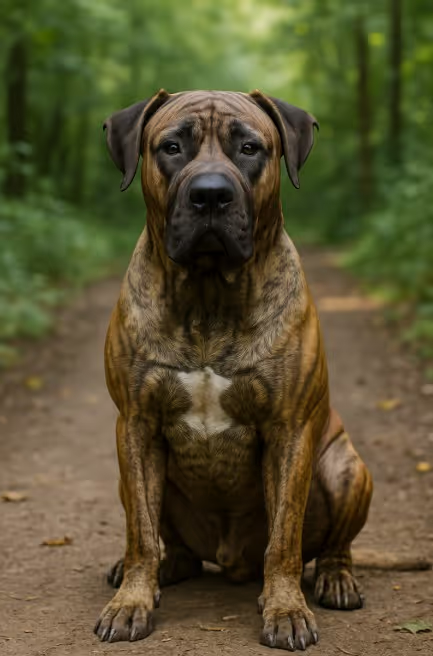The Presa Canario is a powerful, steady-nerved livestock guardian and estate protector from Spain’s Canary Islands. Muscular yet surprisingly athletic, this confident Molosser is affectionate with its family and naturally wary of strangers. Best for experienced owners, the Presa thrives where clear rules, early socialization, and daily structure are non-negotiable. If you’re asking “Are Presa Canarios good family dogs?”—they can be loyal companions in knowledgeable, well-managed homes with excellent training.

Developed on the Canary Islands (notably Tenerife and Gran Canaria), the Presa Canario descends from old-time Spanish catch dogs (perros de presa) blended with regional herding and guardian stock. Historically used to control unruly cattle, hunt feral dogs, and protect farms, they were prized for courage, stability, and a crushing grip (“presa”). Preservation efforts in the late 20th century formalized the modern standard; the breed is recognized by several registries (often as the Dogo Canario) and remains a capable working guardian and devoted home protector.
A large, broad-chested Molosser with a black mask and substantial bone.
Low-maintenance coat; routine care keeps skin and nails healthy.
Power athlete with moderate endurance—quality over marathon mileage.
Confident, intelligent, and independent—clear leadership and consistency matter.
Feed for joint health, steady growth, and a lean, athletic outline.
Robust but size and type bring predictable risks—screening is important.
Select for stable temperament, verified health testing, and transparent support.
Are Presa Canarios good family dogs?
With experienced owners, early socialization, and consistent training, they’re loyal and affectionate; supervision is essential due to size and guarding instinct.
Do Presa Canarios shed?
Light to moderate year-round; a weekly brush keeps hair under control.
How much exercise does a Presa Canario need?
Plan for 60–75 minutes daily—brisk walks, obedience, scent work, and controlled play.
Are Presa Canarios legal in Canada?
Regulations can vary by province and municipality; always check local bylaws (BSL) before acquiring this breed.
Presa Canario vs Cane Corso—what’s the difference?
Both are Italian/Spanish guardians; Presas are typically heavier in head and more “bulldoggy” in expression, with a required black mask, and may present stronger natural suspicion—individual lines vary.
Are Presa Canarios good apartment dogs?
Generally not ideal; possible only with diligent training, management, and daily exercise.
Do Presa Canarios drool?
Some do, especially after drinking/exertion; carry a drool cloth if it bothers you.
What training should I prioritize?
Leash manners, neutrality around people/dogs, reliable recall, and cooperative care (muzzle/nail work).